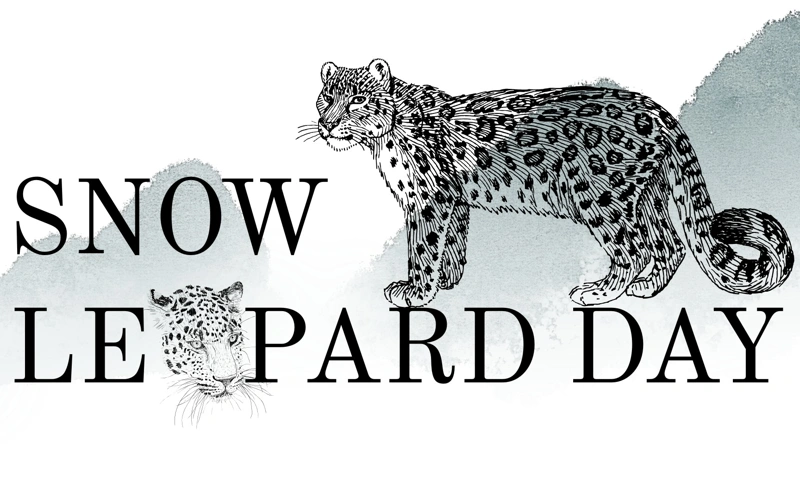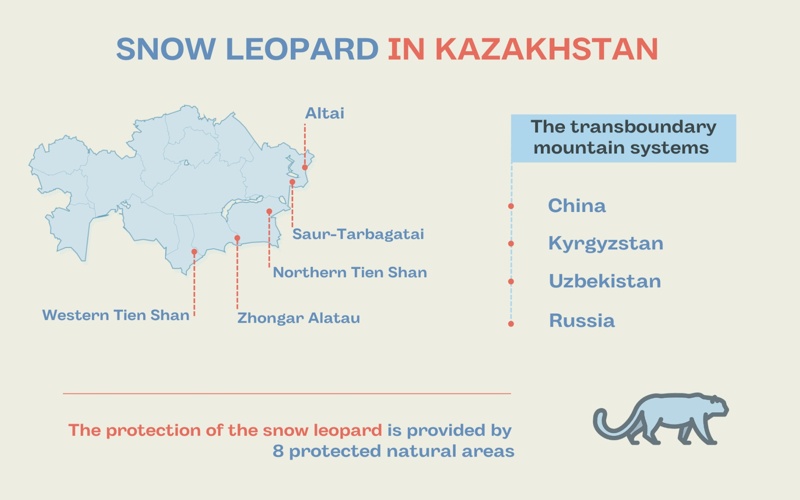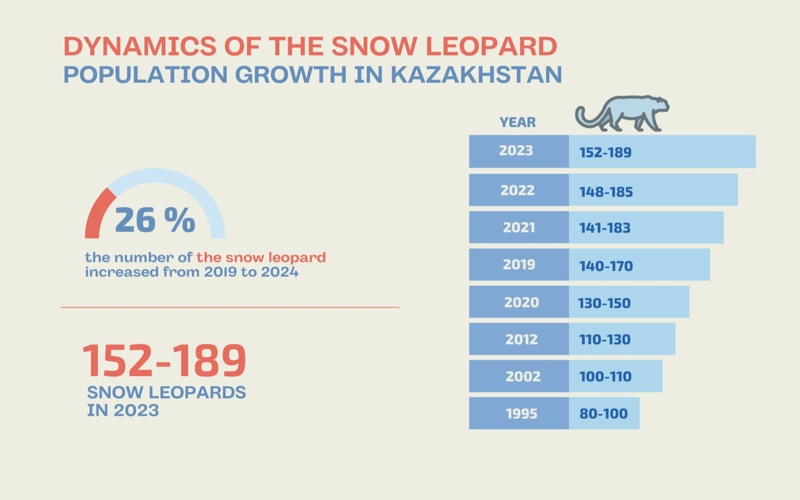Preserving the “ghost of the mountains”: Kazakhstan marks International Snow Leopard Day
October 23 marks International Snow Leopard Day, dedicated to preserving one of the world’s most elusive and majestic big cats. To mark the occasion, Kazinform News Agency correspondent looks at the enduring legacy of the snow leopard — often called the “ghost of the mountains” — and Kazakhstan’s ongoing efforts to protect it.

The snow leopard was first described in 1761 by French naturalist Georges-Louis Leclerc de Buffon. Long before that, the peoples of Central Asia knew it as irbis or ilbirs. Admired for its grace and strength, the species has roamed the region for more than 1.5 million years, as evidenced by fossil remains found in Mongolia and the Altai Mountains.
Its reputation as the “ghost of the mountains” stems from its ability to vanish into rocky terrain, making it one of the least studied big cats in the world. In Kazakhstan, snow leopards inhabit the Altai, Tien Shan, Tarbagatai, Saur, and Dzungarian Alatau mountain ranges in the southeast of the country. These areas include key national parks and protected zones such as Ile-Alatau, Altyn-Emel, Kolsai Lakes, Katon-Karagai, and Aksu-Zhabagly.

In Kazakh culture, the snow leopard holds a special symbolic meaning, representing power, courage, and independence. The irbis appears on the coat of arms of Almaty, on commemorative coins and banknotes, and served as the mascot of the 2011 Asian Winter Games. Its image also adorns the Order of Barys, one of the country’s highest state honors, while the capital’s professional hockey team proudly bears its name — Barys.
Due to habitat fragmentation, poaching, and the decline of prey species such as the Siberian ibex, snow leopard populations fell sharply in the 20th century. By 1995, only 80–100 individuals remained in Kazakhstan. In response, the government adopted the National Action Plan (2015–2024) and the Strategy for the Conservation of the Snow Leopard (2011), aimed at restoring and protecting the population.
“It is worth noting that Kazakhstan’s snow leopard population is of great interest to the international scientific community, as the country is a cross-border migration zone for the species,” the United Nations Development Programme (UNDP) said. “Studying the snow leopard plays an important role not only in ensuring its conservation, but also in identifying potential threats and assessing the state of mountain ecosystems on which local communities depend.”
Over the past decade, conservation efforts have intensified. More than 290 camera traps and 28 thermal imagers have been installed across 14 protected areas to collect real-time data. Around 70 percent of snow leopard habitats are now under state protection, and eleven leopards have been fitted with satellite collars for monitoring.

“Thanks to our conservation and monitoring efforts, we have managed to increase the population from the critical level of the 1990s — from 80–100 leopards to around 189,” said Vice Minister of Ecology and Natural Resources Nūrken Sharbiyev. “Between 2018 and 2024, 205 Bactrian deer were released to restore the natural prey base. More than 100 kulans were relocated, and populations of roe deer and wild boar have been strengthened.” He also noted progress in the country’s tiger restoration initiative, including the establishment of the Ile-Balkhash State Nature Reserve, which spans 415,000 hectares.
The snow leopard is just one pillar of Kazakhstan’s broader environmental strategy. Since gaining independence, the country has made wildlife restoration a national priority, successfully reintroducing endangered species such as kulans, saigas, Przewalski’s horses, and the Turan tiger.
